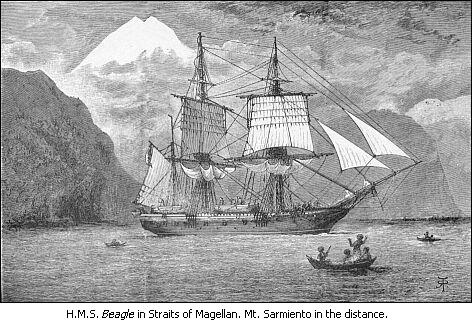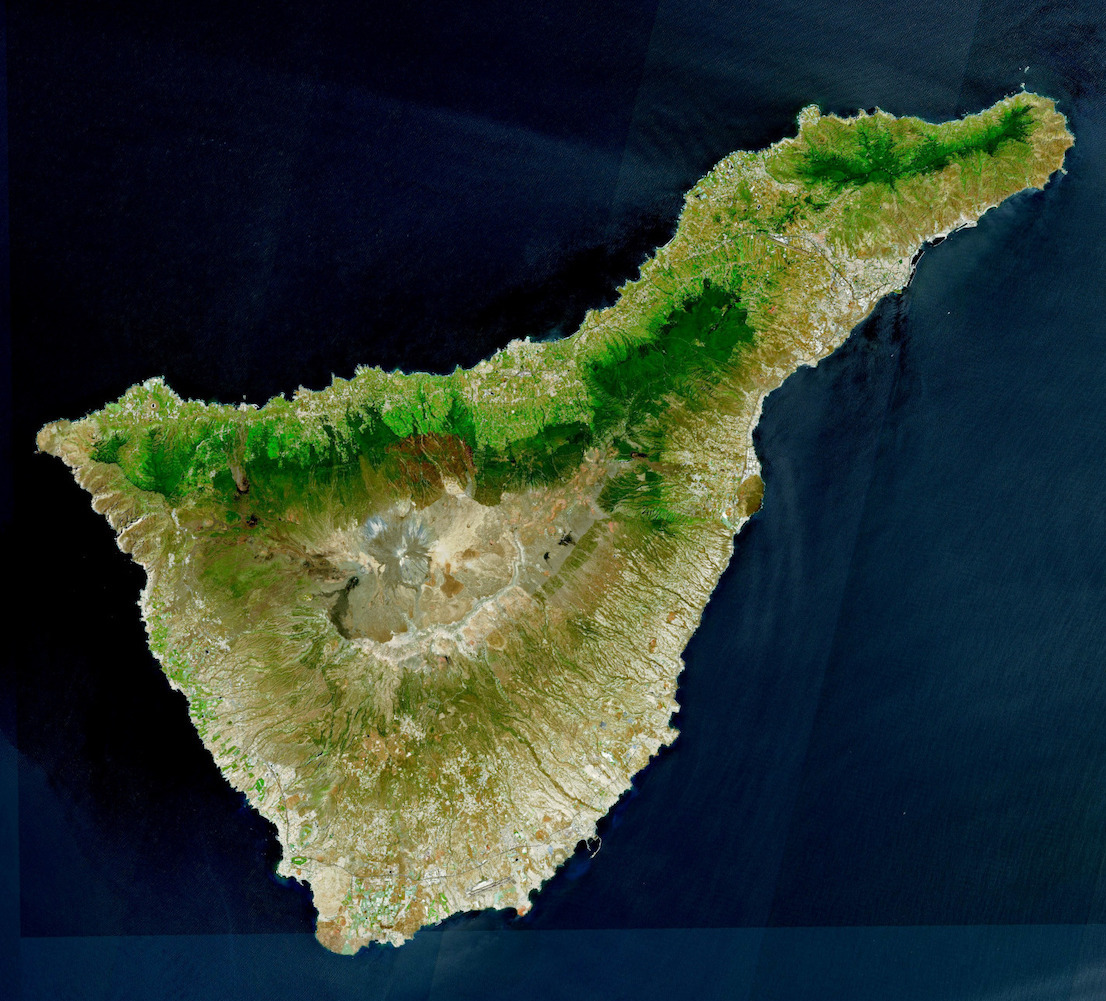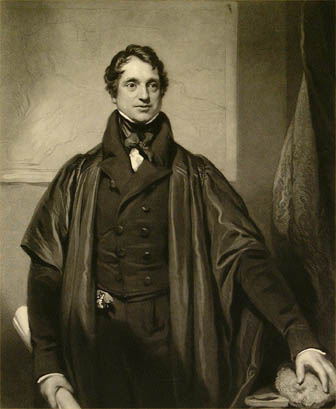|
The Voyage Of The Beagle
''The Voyage of the Beagle'' is the title most commonly given to the book written by Charles Darwin and published in 1839 as his ''Journal and Remarks'', bringing him considerable fame and respect. This was the third volume of ''The Narrative of the Voyages of H.M. Ships Adventure and Beagle'', the other volumes of which were written or edited by the commanders of the ships. ''Journal and Remarks'' covers Darwin's part in the second survey expedition of the ship HMS ''Beagle''. Due to the popularity of Darwin's account, the publisher reissued it later in 1839 as Darwin's ''Journal of Researches'', and the revised second edition published in 1845 used this title. A republication of the book in 1905 introduced the title ''The Voyage of the "Beagle"'', by which it is now best known. ''Beagle'' sailed from Plymouth Sound on 27 December 1831 under the command of Captain Robert FitzRoy. While the expedition was originally planned to last two years, it lasted almost five—''Beagl ... [...More Info...] [...Related Items...] OR: [Wikipedia] [Google] [Baidu] |
Charles Darwin
Charles Robert Darwin ( ; 12 February 1809 – 19 April 1882) was an English Natural history#Before 1900, naturalist, geologist, and biologist, widely known for his contributions to evolutionary biology. His proposition that all species of life have descended from a Common descent, common ancestor is now generally accepted and considered a fundamental scientific concept. In a joint presentation with Alfred Russel Wallace, he introduced his scientific theory that this Phylogenetics, branching pattern of evolution resulted from a process he called natural selection, in which the struggle for existence has a similar effect to the artificial selection involved in selective breeding.. Darwin has been described as one of the most influential figures in human history and was honoured by Burials and memorials in Westminster Abbey, burial in Westminster Abbey. Darwin's early interest in nature led him to neglect his medical education at the University of Edinburgh Medical Schoo ... [...More Info...] [...Related Items...] OR: [Wikipedia] [Google] [Baidu] |
Pringle Stokes
Pringle Stokes (23 April 1793 – 12 August 1828) was a British naval officer who served in HMS '' Owen Glendower'' on a voyage around Cape Horn to the Pacific coast of South America, and on the West African coast fighting the African slave trade. He then commanded HMS ''Beagle'' on its first voyage of exploration in the south Atlantic. After two years in command of the ''Beagle'', depressed by the harsh winter conditions of the Strait of Magellan, he committed suicide. Early career Pringle Stokes was born on 23 April 1793, son of Charles and Elizabeth Stokes. He was baptized at Chertsey on 2 May 1793. At the age of twelve, on 5 June 1805 he joined the Royal Navy as a midshipman in HMS ''Ariadne''. Stokes served as a lieutenant on board the frigate HMS '' Owen Glendower'', which left England for South America in November 1819. Robert FitzRoy, who was to take command of the ''Beagle'' after Stokes died, also served on the ''Owen Glendower'' on this voyage. He had joined the ... [...More Info...] [...Related Items...] OR: [Wikipedia] [Google] [Baidu] |
Hensleigh Wedgwood
Hensleigh Wedgwood (21 January 1803 – 2 June 1891) was a British etymologist, philologist and barrister, author of '' A Dictionary of English Etymology''. He was a cousin of Charles Darwin, whom his sister Emma married in 1839. Early life Wedgwood was born at Tarrant Gunville in Dorset, the fourth son of Josiah Wedgwood II and Elizabeth Allen of Cresselly, Pembrokeshire. He was educated at Rugby School, then entered St John's College, Cambridge in 1820 but switched to Christ's College the following year. Although he did well in maths, graduating as 8th wrangler, he finished bottom in the classical tripos at Cambridge in 1824, for which he was awarded the first "wooden wedge", equivalent to the wooden spoon, and jokingly named for him. Career After leaving Cambridge, Wedgwood read for the chancery bar. In 1828, he qualified as a barrister, but never practised. Between 1831 and 1837, he served as a police magistrate and sat at the Surrey magistrates' court at Union Hall, S ... [...More Info...] [...Related Items...] OR: [Wikipedia] [Google] [Baidu] |
Maer Hall
upright=1.35, Maer Hall Maer Hall is a large Grade II listed 17th-century country house in Maer, Staffordshire, set in a park which is listed Grade II in Historic England's Register of Parks and Gardens The large stone-built country house and estate of Maer Hall dominate the village of Maer. Its location in the district of Newcastle-under-Lyme, Staffordshire, England, is attractively rural, but fairly close to the pottery manufacturing area around Stoke-on-Trent which attracted its most famous owner Josiah Wedgwood II. His nephew Charles Darwin often visited Maer, and married Josiah's daughter Emma. A manor house at Maer dates back to 1282, the owner then being William de Mere. The present stone house was built around 1680 on a slope above a small lake, or " mere", which gave the house its name. In the 18th century the landscape designer Capability Brown altered the lake in a scheme of pleasure grounds. The house could be approached from either the north entrance with its grad ... [...More Info...] [...Related Items...] OR: [Wikipedia] [Google] [Baidu] |
Darwin–Wedgwood Family
The Darwin–Wedgwood family are members of two connected families, each noted for particular prominent 18th-century figures: Erasmus Darwin, a physician and natural philosopher, and Josiah Wedgwood FRS, a noted potter and founder of the eponymous Josiah Wedgwood & Sons pottery company. The Darwin and Wedgwood families were on friendly terms for much of their history and members intermarried, notably Charles Darwin, who married Emma Wedgwood. The most notable member of the family was Charles Darwin, a grandson of both Erasmus Darwin and Josiah Wedgwood. The family also included at least ten Fellows of the Royal Society, and several artists and poets (among whom was the 20th-century composer Ralph Vaughan Williams). Presented below are brief biographical descriptions and genealogical information, and mentions of some notable descendants. (The individuals are listed by year of birth and grouped into generations.) The relationship to Francis Galton, and to his immediate ancesto ... [...More Info...] [...Related Items...] OR: [Wikipedia] [Google] [Baidu] |
Rio De Janeiro
Rio de Janeiro, or simply Rio, is the capital of the Rio de Janeiro (state), state of Rio de Janeiro. It is the List of cities in Brazil by population, second-most-populous city in Brazil (after São Paulo) and the Largest cities in the Americas, sixth-most-populous city in the Americas. Founded in 1565 by the Portuguese people, Portuguese, the city was initially the seat of the Captaincy of Rio de Janeiro, a domain of the Portuguese Empire. In 1763, it became the capital of the State of Brazil, a List of states of the Portuguese Empire, state of the Portuguese Empire. In 1808, when the Transfer of the Portuguese Court to Brazil, Portuguese Royal Court moved to Brazil, Rio de Janeiro became the seat of the court of Queen Maria I of Portugal. She subsequently, under the leadership of her son the prince regent John VI of Portugal, raised Brazil to the dignity of a kingdom, within the United Kingdom of Portugal, Brazil and the Algarves, United Kingdom of Portugal, Brazil, and Algar ... [...More Info...] [...Related Items...] OR: [Wikipedia] [Google] [Baidu] |
Botafogo
Botafogo (local/standard alternative Brazilian Portuguese pronunciation: ) is a beachfront neighborhood (''bairro'') in Rio de Janeiro, Brazil. It is a mostly upper middle class and small commerce community, and is located between the hills of Mundo Novo, Dona Marta (which separates it from Laranjeiras) and São João (which separates it from Copacabana). The word Botafogo also refers to a Latin American ballroom dance move that originated in this area. Etymology Botafogo was named after João Pereira de Sousa Botafogo (1540–1627), who was responsible for the galleon ''Botafogo'''s artillery. Because of that, he received the nickname "Botafogo" and included it in his family name. When he went to live in Brazil, the Portuguese Crown granted him the land known today as Botafogo. The name literally means "set it on fire" in Portuguese (a reference to the ''Botafogo'' galleon's artillery power). In the mid-19th century, English language speakers also called it Boto Fogo. ... [...More Info...] [...Related Items...] OR: [Wikipedia] [Google] [Baidu] |
Devonport, Plymouth
Devonport ( ), formerly named Plymouth Dock or just Dock, is a district of Plymouth in the English county of Devon, although it was, at one time, the more important settlement. It became a county borough in 1889. Devonport was originally one of the " Three Towns" (along with Plymouth and East Stonehouse); these merged in 1914 to form what would become in 1928 the City of Plymouth. It is represented in the Parliament of the United Kingdom as part of the Plymouth Sutton and Devonport constituency. Its elected Member of Parliament (MP) is Luke Pollard, who is a member of the Labour and Co-operative Party. The population of the ward at the 2011 census was 14,788. History Plymouth Dock In 1690 the Admiralty gave a contract to Robert Waters from Portsmouth to build a stone dock at Point Froward on the east bank of the Hamoaze at the mouth of the River Tamar. Plymouth Dock, as Devonport was originally called, began around 1700 as a small settlement to house workers employed on ... [...More Info...] [...Related Items...] OR: [Wikipedia] [Google] [Baidu] |
Tenerife
Tenerife ( ; ; formerly spelled ''Teneriffe'') is the largest and most populous island of the Canary Islands, an Autonomous communities of Spain, autonomous community of Spain. With a land area of and a population of 965,575 inhabitants as of April 2025, it is the most populous island in Spain and the entire Macaronesia region. Tenerife is also home to 42.7% of the total population of the archipelago. More than seven million tourists (7,384,707 in 2024) visit Tenerife each year, making it by far the most visited island in the archipelago. It is one of the most important tourist destinations in Spain and the world, hosting one of the world's largest carnivals, the Carnival of Santa Cruz de Tenerife. The capital of the island, , is also the seat of the island council (). That city and are the co-capitals of the Autonomous communities of Spain, autonomous community of the Canary Islands. The two cities are both home to governmental institutions, such as the offices of the preside ... [...More Info...] [...Related Items...] OR: [Wikipedia] [Google] [Baidu] |
Adam Sedgwick
Adam Sedgwick FRS (; 22 March 1785 – 27 January 1873) was a British geologist and Anglican priest, one of the founders of modern geology. He proposed the Cambrian and Devonian period of the geological timescale. Based on work which he did on Welsh rock strata, he proposed the Cambrian period in 1835, in a joint publication in which Roderick Murchison also proposed the Silurian period. Later in 1840, to resolve what later became known as the Great Devonian Controversy about rocks near the boundary between the Silurian and Carboniferous periods, he and Murchison proposed the Devonian period. Though he had guided the young Charles Darwin in his early study of geology and continued to be on friendly terms, Sedgwick was an opponent of Darwin's theory of evolution by means of natural selection. He strongly opposed the admission of women to the University of Cambridge, in one conversation describing aspiring female students as "nasty forward minxes." Life and career Sedgwick ... [...More Info...] [...Related Items...] OR: [Wikipedia] [Google] [Baidu] |
Alexander Von Humboldt
Friedrich Wilhelm Heinrich Alexander von Humboldt (14 September 1769 – 6 May 1859) was a German polymath, geographer, natural history, naturalist, List of explorers, explorer, and proponent of Romanticism, Romantic philosophy and Romanticism in science, science. He was the younger brother of the Prussian minister, philosopher, and linguistics, linguist Wilhelm von Humboldt (1767–1835). Humboldt's quantitative work on botany, botanical geography laid the foundation for the field of biogeography, while his advocacy of long-term systematic geophysical measurement pioneered modern Earth's magnetic field, geomagnetic and meteorology, meteorological monitoring. Humboldt and Carl Ritter are both regarded as the founders of modern geography as they established it as an independent scientific discipline. Between 1799 and 1804, Humboldt travelled extensively in the Americas, exploring and describing them for the first time from a non-Spanish European scientific point of view. His des ... [...More Info...] [...Related Items...] OR: [Wikipedia] [Google] [Baidu] |
John Stevens Henslow
John Stevens Henslow (6 February 1796 – 16 May 1861) was an English Anglican priest, botanist and geologist. He is best remembered as friend and mentor to Charles Darwin. Early life Henslow was born at Rochester, Kent, the son of a solicitor John Prentis Henslow, who was the son of John Henslow. Henslow was educated at St. John's College, Cambridge where he graduated as 16th wrangler in 1818, the year in which Adam Sedgwick became Woodwardian Professor of Geology. Early career Henslow graduated in 1818. He already had a passion for natural history from his childhood, which largely influenced his career, and he accompanied Sedgwick in 1819 on a tour in the Isle of Wight where he learned his first lessons in geology. He also studied chemistry under Professor James Cumming and mineralogy under Edward Daniel Clarke. In the autumn of 1819 he made valuable observations on the geology of the Isle of Man (Trans. Geol. Soc., 1821) and in 1820 and 1821 he investigated the ... [...More Info...] [...Related Items...] OR: [Wikipedia] [Google] [Baidu] |





